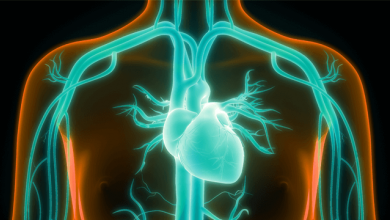Search results
Author(s):
James A Reiffel
Added:
3 years ago
Atrial fibrillation (AF) is the most common sustained, medically significant, and troublesome arrhythmia encountered in clinical practice. AF has been associated with decreased quality of life (symptoms), serious morbidity (thromboemboli and tachycardia-induced cardiomyopathy), and increased risk of mortality. Several articles1,2 have reviewed this arrthymia in depth including its presentations,…
View more
Author(s):
Gerald V Naccarelli
Added:
3 years ago
Atrial fibrillation (AF) continues to be the most common arrhythmic disorder that is admitted to the hospital in the Medicare population. Over the next five years, the worldwide AF market potential will grow to in excess of 8.5 million people. This growth is predominantly fueled by the aging of the worldwide population and the fact that AF is an affliction of the aged with up to 6% of…
View more
Author(s):
James A Reiffel
Added:
3 years ago
Atrial fibrillation (AF) is the most common sustained, medically significant, and troublesome arrhythmia encountered in clinical practice. AF has been associated with decreased quality of life (symptoms), serious morbidity (thromboemboli and tachycardia-induced cardiomyopathy), and increased risk of mortality. Several articles have reviewed this arrthymia in depth including its presentations,…
View more
Author(s):
Andrew Choi
,
Jonathan S Steinberg
,
Suneet Mittal
Added:
3 years ago
Atrial fibrillation (AF) is the most frequently observed sustained cardiac arrhythmia encountered in clinical practice. Its incidence is increasing in the US.1 Numerous risk factors have been implicated in the development of AF, including non-modifiable risk factors such as age and gender, modifiable risk factors such as obesity—itself a risk factor for obstructive sleep apnea (OSA)—and smoking,…
View more
Author(s):
David J Wilber
Added:
3 years ago
Atrial fibrillation (AF) is a supraventricular arrhythmia characterized by poorly coordinated atrial activation and associated with reduced atrial mechanical function. Over the long term, it is associated with an increased risk of stroke, heart failure and mortality. AF can occur in the absence of overt structural heart disease in up to 30% of patients; however, hypertension, coronary artery…
View more
Author(s):
Malcolm M Bersohn
Added:
3 years ago
The usual reason for pacing is to prevent bradycardia, which is most commonly due to sick sinus syndrome or atrioventricular (AV) nodal disease. The need for pacing for either of these indications increases progressively with age. Atrial fibrillation (AF) is the most common serious arrhythmia. The incidence of AF also increases progressively with age, and patients with pacemakers may be even more…
View more
Author(s):
Gerald V Naccarelli
,
Deborah L Wolbrette
,
Soraya Samii
,
et al
Added:
3 years ago
Currently available antiarrhythmic drugs for the treatment of atrial fibrillation are limited in their efficacy and have potential for adverse effects, including torsade de pointes. With the aging of the population, the incidence of atrial fibrillation will double in frequency over the next 15 years. Thus, more effective and safer antiarrhythmic drugs for the treatment of atrial fibrillation are…
View more
Author(s):
Douglas P Zipes
Added:
3 years ago
Atrial fibrillation (AF) is the most common sustained clinical arrhythmia. The disease has a significant socioeconomic impact, with the annual cost of treating AF estimated to be about US$3,600 per patient. Although not directly life-threatening, AF also creates a growing and significant medical impact and is associated with an increased long-term risk of stroke, heart failure, and allcause…
View more
Artificial Intelligence in Atrial Fibrillation
Author(s):
Francisco Lopez-Jimenez
,
David M Harmon
Added:
11 months ago
Podcast Episode












